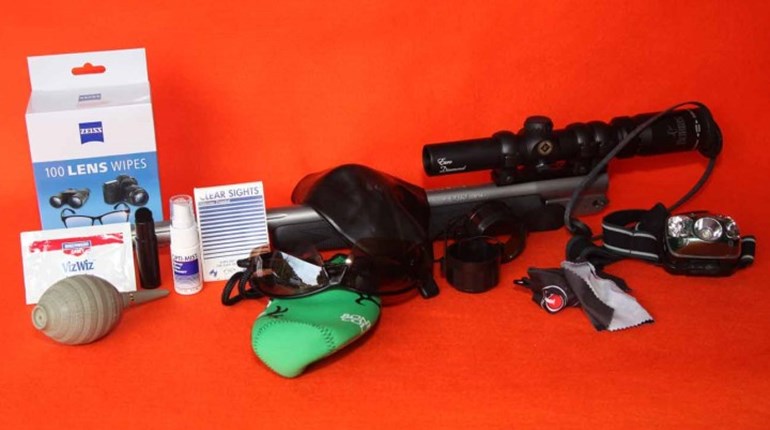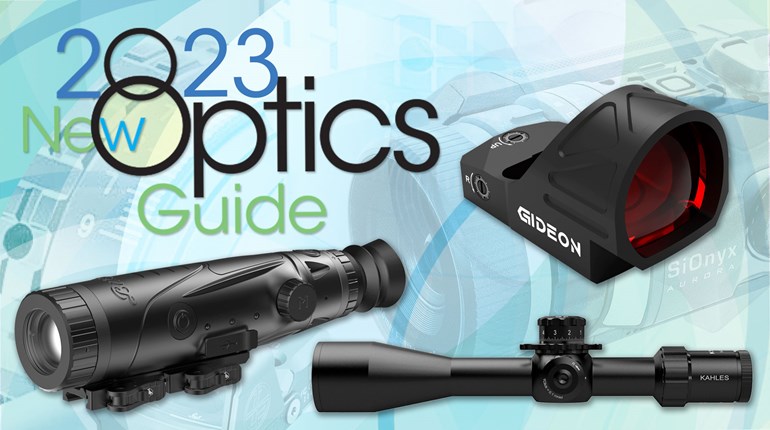If the devil had a horse it would be a nilgai. Not that this flavorful antelope species native to India is evil, but it certainly favors depictions of Lucifer, what with its sharp brow, shadowy cheek bones and spiky horns that jut from its skull like a Halloween mask. Fact is the nilgai is as spooky as game animals get. I was lucky to see a flash of horn in the heavy brush at all. Thanks to a magnified view, I immediately realized it was not the 5-inch horn of an immature animal but the 7-inch dagger of a trophy. I dropped the bino onto its strap and threw up the rifle, found the bull’s shoulder in the scope and mashed the trigger. The black-maned bull wheeled as the 200-grain Fusion smacked.
I’m betting most NRA members know Weaver optics. Brought to market by William Ralph Weaver in 1930, many of our fathers were finally won over by the all-steel Weaver K4 or similar riflescopes that represented a quantum leap from their trusted iron sights. They weren’t the brightest telescopes in the world, but they were tough and they gave willing hunters a huge advantage. In 2002 the Meade Instrument Company bought Weaver and updated the line with new products featuring new materials. But the acquisition wasn’t without its problems. Then, in 2008, Weaver Optics was purchased by ATK (the parent company of Federal Ammo and a dozen-plus other brands). ATK modernized and revamped the line, and now offers various lines of Weaver binoculars and riflescopes including (and in order of price range) the KASPA, 40/44, Classic, Grand Slam and Super Slam, in addition to laser rangefinders.
The 8.5x45 mm Super Slam I tested at Jeff Rann’s 777 Ranch in Texas is a high-end, roof-prism binocular. Sadly for us, at just over $1,000 retail, it’s actually in the “high-mid” level, considering top-end binoculars these days can cost up to $3,500. To me $1,000 is a lot to pay for anything, and so I hold the Super Slam to a high standard.
Optically, the Weaver is difficult to tell apart from top-end optics costing $500 more. That said, it’s difficult to tell apart from units costing $300 less. In the past, German and Austrian glass and manufacturing techniques had a clear edge, but Japanese optical companies and recently even the Chinese have closed the gap. The Super Slam is made in Japan, like dozens of other brands. Japan is now known for producing extremely high-quality optics at mid- to low-level prices—prices that the Europeans simply can’t match due to labor costs.
This 45 mm Weaver performed excellently in low light. In fact I watched some of the biggest whitetail deer I’ve ever seen while at the 777, and counted their antler points until nightfall. (Too bad I couldn’t afford to shoot one!) The Weaver was clear and sharp throughout its focus range, and lens flare in morning and evening sun was mitigated thanks to fully multi-coated optics. These days, however, only the cheapest optics are not coated, so this is no bragging point.
Rubber armor protects the Super Slam’s magnesium frame. The binocular is purged with argon to combat internal fogging. I tested it by letting it soak in my kitchen sink for 10 minutes; dropped it on grass 10 times from 4 feet; then froze it. It did not break, leak or exhibit internal fogging.
While its Bak-4 roof prisms, coatings and armoring are quality, they are nothing new. Perhaps the Super Slam’s most innovative features are found on its exterior. The open-bridge design, made popular by Swarovski, shaves weight while enhancing grip and comfort.
One problem I have with binoculars is often, after hours of walking and hunting, the interpupillary distance (the distance between the eyes) gets bumped. Then, just as a deer is about to disappear, I pull up the binocular but I can’t see. The Super Slam remedies this with a locking dial between the objective lenses. Once the user finds his or her exact measurement, the knob can be tightened down to lock in the distance. It’s a handy feature and I wish more binos had it. The unit also features an oversized focus wheel in the open space between the barrels rather than ahead of the near bridge, which shaves overall size. It is easy to find with an index finger and easy to manipulate. It also hides the diopter adjustment.
Negatively, I found the extending eye relief cups to be too loosy-goosy for my liking. They rotate up and out for use without eyeglasses, but I wish the unit had a more tactile system to keep the cups in place.
The Super Slam 8.5x45 mm is robust for a roof-prism binocular. It weighs 2 ounces shy of 2 pounds, so it should be bright and clear, and it is. The 8.5X nearly splits the difference for some guys who can’t decide if they want 8X or 10X (a 10.5X also is available). All in all, it helped me find, judge and corral the devil’s horse, and for that I give it points.
Weaver Super Slam
Type: roof-prism binocular
Magnification: 8.5X (tested), 10.5X
Objective Lens Diameter: 45 mm
Eye Relief: 18.5 mm
Exit Pupil: 5.3 mm
Field of View @ 1,000 yds: 367'
Coatings: fully multi-coated
Dimensions: length 6.3"; width 5.6"; weight 31.2 ozs.
Construction: magnesium chassis, rubber armor
Accessories: neck strap, eye caps, case
MSRP: $1,062




































